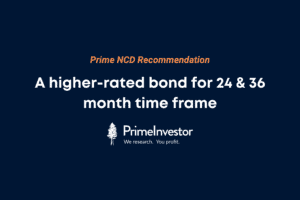

These are extraordinary times for fixed income investors. Interest rates, after recent rate cuts by the MPC, are ruling at lows not seen in the last two decades. The repo rate of 4.4% today is even below levels seen during the global financial crisis.
With policy rates and market interest rates falling, banks have slashed deposit rates and the Government has effected steep cuts in the small savings rates for the April 1 to June 30 2020 quarter. At the same time, the lock-down and its impact on borrowers makes this a dicey time to take on any kind of risk with your fixed deposit investments.
Keeping all this in mind, we have made significant changes to our curated list of deposits. Here are the three key sets of changes to the list and why we made them.
# 1 Replacing post office deposits with bank FDs
After holding on to high interest rates on its small savings schemes for the last three quarters, the Government has over-compensated on March 31 by slashing these rates drastically for the coming quarter, from April 1 to June 30 2020. Therefore, post office time deposits have seen a 100-110 basis point reduction in rates, the Monthly Income Scheme has seen a 100-basis point cut and the Senior Citizens Savings Scheme has seen a 120-basis point decline.
We feel that this round of rate cuts has materially reduced the attractiveness of the post office time deposits as an investment option. The primary objective of any financial investment should be to beat inflation. Given that recent consumer price inflation rates in India have been at 5.5-7.5 per cent (the inflation you personally experience may be even higher), post office deposits would now yield a negative real return. Though rates on the post office monthly income scheme are slightly better at 6.6%, the five-year lock in period is a deterrent today.
This is not the time to park deposits with small finance banks or smaller private banks, though they may offer better returns
We therefore replaced the post office deposits in Prime Deposits with deposit products from two of India’s leading banks – SBI and HDFC Bank. Apart from offering slightly better rates (still not matching up to inflation though), the digital interface possible with these banks and their better service levels make them better choices compared to post office deposits, at this juncture.
We believe that the coming months will be quite stressful for smaller banks and lenders, and therefore recommend playing it absolutely safe with your choice of banks. This is not the time to park deposits with small finance banks or smaller private banks, though they may offer better returns.
| Small savings schemes: New versus Old rates (% p.a) | Old | New * |
| Savings deposit | 4 | 4 |
| 1-3 year time deposits | 6.9 | 5.5 |
| 5 year time deposit | 7.7 | 6.7 |
| 5 year recurring deposit | 7.2 | 5.8 |
| Monthly Income Scheme | 7.6 | 6.6 |
| Senior Citizens Savings Scheme | 8.6 | 7.4 |
| NSC | 7.9 | 6.8 |
| PPF | 7.9 | 7.1 |
| Kisan Vikas Patra | 7.6 | 6.9 |
| Sukanya Samriddhi Scheme | 8.4 | 7.6 |
# 2 Pruning NBFC deposits
With most businesses in lock-down, salaried as well as self-employed folk may face a high risk of interrupted income in the coming months, which in turn poses a risk to loan repayments. The moratorium recommended by RBI to banks and NBFCs may also put these lenders in a tight spot, as one doesn’t know if the 3-month leeway on loan repayments will extend longer as borrowers take their repayments less seriously. With the defaults not to be recognised by CIBIL or rating agencies over the next three months, NPAs for banks and NBFCs from this lockdown may remain hidden in their financial disclosures too.
This makes this a very dicey time to lend money to NBFCs operating in the riskier lending areas such as vehicle finance, durable finance or unsecured loans, where loans have either been extended without collateral, or have been given with a depreciating asset as the collateral. Given these difficulties, we decided to play it safe by removing NBFCs such as Bajaj Finance and Mahindra Finance from our recommended list. We have stayed with Sundaram Finance and HDFC alone, given their solid managements who may not take on reputational risk despite tough business conditions. These NBFCs today offer substantially higher rates than both post office schemes and bank deposits, offering an opportunity to diversify.
# 3 Restricting tenure
No matter how you view it, it’s a Hobson’s choice for fixed deposit investors today. If you want to avoid risk (which you should, in the circumstances), then you are forced to settle for ultra-low returns that don’t even match inflation. However, at times like this, investors do need to hold ready cash in deposit products that isn’t subject to equity or bond market volatility.
The best way for depositors to handle this situation is to park their deposit money today for the lowest tenures possible and wait for the current phase to pass .
We therefore think that the best way for depositors to handle this situation is to park their deposit money today for the lowest tenures possible and wait for the current phase to pass. The COVID-19 crisis is unlikely to last beyond the next six months to a year and the ultra-low rates we’re seeing now are also unlikely to last. Investing in 5-year or more fixed income products such as the POMIS, NSC or post office time deposits at current rates will mean unnecessarily locking into these exceptionally low returns.
This is the key reason why we’re knocked off all deposits for more than 3-year tenures from our curated list. We have retained the Senior Citizen’s Savings Scheme alone because of its relatively better rates (7.4%) compared to prevailing bank deposit as well as market interest rates on government borrowings.
[Updated: The below section added on April 7, 2020]
What you should do
So if you already have deposits in riskier options such as private sector banks, small finance banks or NBFCs from our earlier recommendations, what should you do? Well, the answer will depend on how much of your portfolio is invested in the riskier options. We have already recommended that at times like this, it is best to play it absolutely safe with your emergency fund sticking to the top couple of banks such as SBI and HDFC Bank. For debt allocations beyond this, select your deposits from our current Prime Deposits list. If you have older deposits in NBFCs or small finance banks that do not find place in this table, ensure that they make up no more than 5% of your total portfolio (equity/debt portions included). If they do, liquidate the excess and switch to our recommended list. Staying within the boundaries of an asset allocation plan that is suited to your risk profile and keeping an emergency fund ready are absolutely essential at times like this.
The message for fixed deposit investors is simple. These are terrible times. Lie low, minimise tenure and wait for a turn in the rate cycle.





15 thoughts on “Quarterly review: What’s changing in Prime Deposits”
Hi
Given that Yes Bank’s restructuring (for the lack of a better word) has now been completed, would you consider it to be a safe and secure private bank from the point of view of creating FDs?
No, because a complete restructuring exercise to get the banks financials in order is yet to be announced. A possible merger, takeover or restructuring could mean fresh uncertainty for depositors.
Dear prime investor your coverage of deposits is commendable I would suggest you’re covering N CDs which offer better rate of interest at comparable risk it will help your investors like me in my immensely
Hello Sir, Thanks. We have covered in the past and will cover selectively when opportunities are right. Meanwhile please do read this when you get a chance: https://www.primeinvestor.in/six-must-know-facts-about-ncds/ regards, Vidya
We do cover NCDs in primary issues which we feel are investment worthy.
Please give your views on the FDs in InduInd Bank. There’s adverse news about the bank every day. My family has a substantial amount of FDs in the bank. Should we break the FDs and shift to PSU Banks?
HEllo sir, we have responded through a ticket to your email. thanks, Vidya
Please expedite yr reply for my query dated Apr 5th reg constant maturity scheme of SBI ???
Hello sir,
Please mail contact@primeinvestor.in for specific queries regarding funds, and not blog comments as the blog is meant more for discussion than addressing fund and portfolio queries. Blog comments may also get delayed; mailing us will help us track queries and respond better.
Thanks,
Bhavana
I have fixed deposits with Bajaj Finance – is the recommendation to hold or redeem – I do not see it in the recommended list of deposits
Our response will be based on what % the deposit accounts for in your overall portfolio. We request you to please write to contact@primeinvestor.in for any specific queries. For this, please mail us stating what % it accounts for your in your portfolio and whether you are dependent on it for income.ALso note that these are subscriber only articles. Hence, we will be unable to respond in the blog on any recommendations.
thanks
Vidya
I have already invested in Bajaj Finance FD based on previous recommendation, what I have to do now, should I retain or redeem?
Hello,
Thank you for writing to us. Please note that these are subscriber only articles. Hence, we will be unable to respond in the blog on any recommendations we have made. For this query, please mail us stating what % it accounts for your in your portfolio and whether you are dependent on it for income. We request you to please write to contact@primeinvestor.in for thsi and for any specific queries in future.
thanks
Vidya
Hi,
What about constant maturity of SBI recommended by Prime Investor ( Ms. Bhavana) earlier? Can I invest? I am willing to lock in for 5 years. Please suggest
Hello sir,
I will create a ticket for this query and respond through that channel.
Thanks,
Bhavana
Comments are closed.